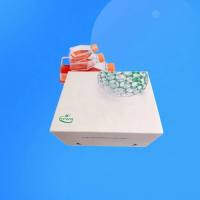Determination of Biological Parameters on Fine-Needle Aspirates from Non-Small Cell Lung Cancer
互联网
互联网
相关产品推荐

Hemagglutinin/HA重组蛋白|Recombinant H1N1 (A/California/04/2009) HA-specific B cell probe (His Tag)
¥2570

Nonstructural protein 2/NS2重组蛋白|Recombinant H1N1(A/Puerto Rico/8/34/Mount Sinai)Non-structural Protein 2/NS2
¥2570

PSIP1/PSIP1蛋白Recombinant Human PC4 and SFRS1-interacting protein (PSIP1)重组蛋白CLL-associated antigen KW-7Dense fine speckles 70KDA protein ;DFS 70Lens epithelium-derived growth factorTranscriptional coactivator p75/p52蛋白
¥1344

CCL1/CCL1蛋白/C-C motif chemokine 1(Small-inducible cytokine A1)(T lymphocyte-secreted protein I-309)蛋白/Recombinant Human C-C motif chemokine 1 (CCL1)重组蛋白
¥69

BEAS-2B人正常肺上皮细胞|BEAS-2B细胞系|Human Normal Lung Epithelial Cells
¥1500
相关问答

